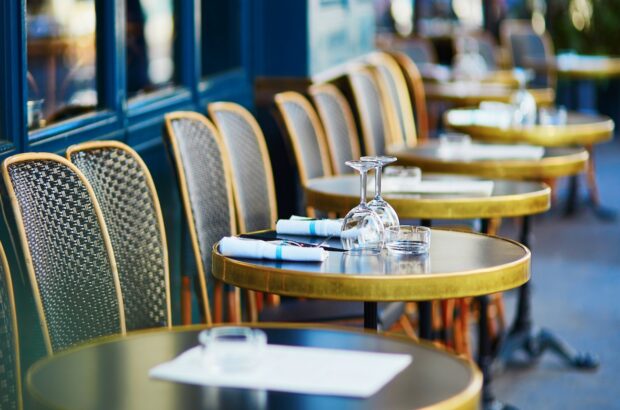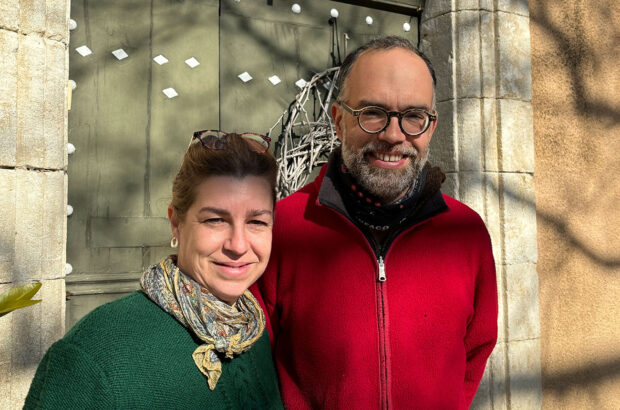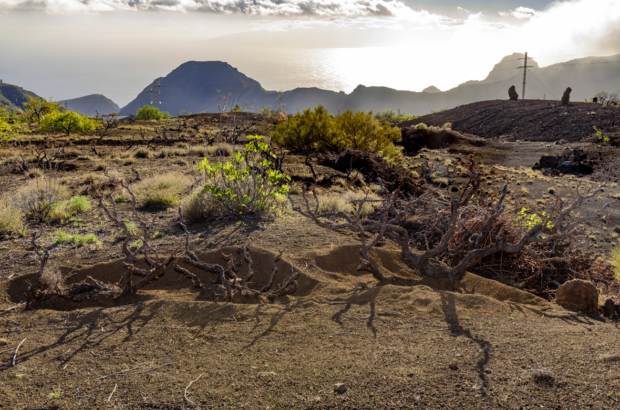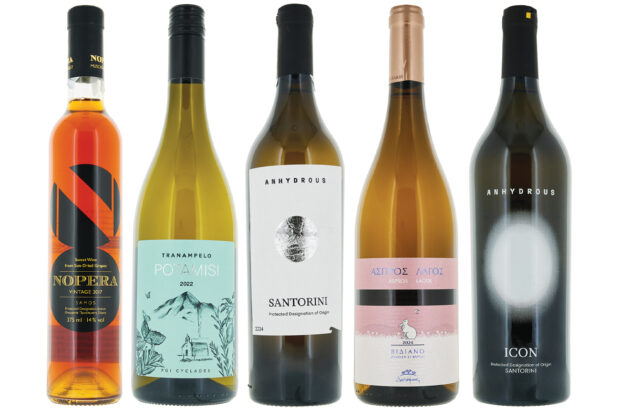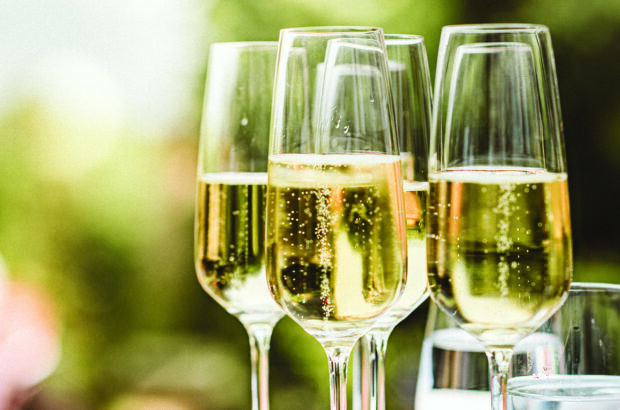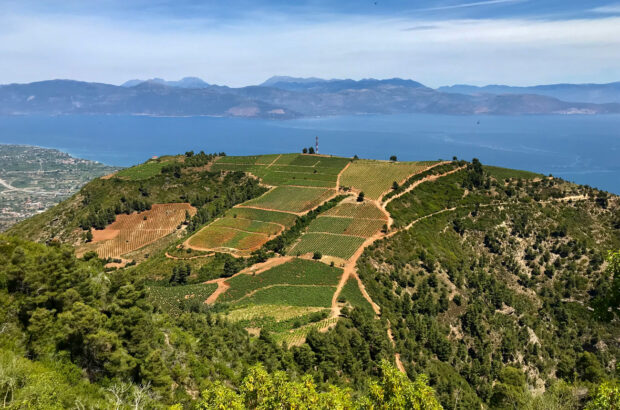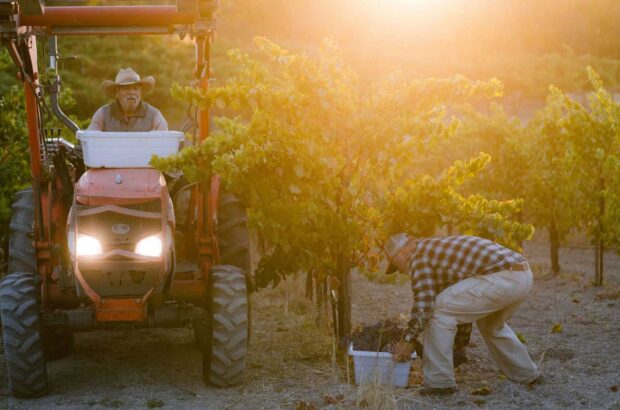The Marche region grand tour
- There are many hill-tops capped with extraordinarily well-preserved medieval villages.
- Staying amid vineyards and olive groves you get the best of both worlds.
- Marinated anchovies, mussels, clams, squid, tail of monk fish..
- Olives favoured by the Romans..
- The wine quality still has to catch up with the food.
The Marche district in central Italy is only marginally less accessible to tourists than Tuscany, yet few people know anything about it. Thumbing through the mainstream guide books on Italy to learn more before travelling there doesn’t help much. It is often grouped together with Umbria, which adjoins most of its western border, but even the two of them together barely muster a fraction of the outpourings on Florence, let alone Tuscany.
What information there is tends to be about the northern half of the region: the seaside resorts, the ports of Pesaro and Ancona and the, admittedly impressive, town of Urbino, with its spectacular Renaissance palace. The largely unspoilt countryside further south gets hardly a mention, but this area, particularly the dramatic fortress hill towns of the Ascoli Piceno province bordering Abruzzo, is both a visual and culinary delight.
The southernmost province of the Marche effectively splits into two parts, the developed coastline and the unspoilt interior. There is a thin strip alongside the Adriatic which, mainly because it has large tracts of sandy beach, is pretty developed and quite touristy (though certainly not tacky). This is particularly true around the resort of San Benedetto del Tronto, famous for the 5,000 palm trees that shade its six-kilometre promenade. In this area alone there are about 100 hotels.
The largely rural interior is quite different. Away from the narrow coastal plain the land rises quickly and many hill-tops are capped with extraordinarily well-preserved medieval villages like Ripatransone, Aquaviva and Castignano, largely unsullied by the influence of tourism. So much so that outside the regional capital of Ascoli Piceno there are few obvious places to stay. This is where the local version of agriturismo comes into play.
These are mostly working farms, often with their own wineries, that offer accommodation, usually to a high standard, and home cooking the best of which is sublime. There are quite a few such farms with rooms around the attractive town of Offida in the heart of the wine-growing region. Some, like Ciu Ciu, which is on the road between Offida and Aquaviva and is also one of the region’s best wine producers, have a restaurant open to non-residents. More usually you have stay to eat the home produced food but this is no hardship as it’s the best way to experience the simple but delightful country cooking this area excels in.
We lodged several days at the agrituristica Fiorenire which boasts a fine view and is close to the village of Castignano. Every dish put on the table before us – they seemed to just keep coming – featured the farm’s own produce. Hams and salamis of the highest quality, several varieties of olive, amazing crostini the like of which London’s fashionable restaurants never quite manage to replicate. Meats, perhaps rabbit, chicken and pork, cooked in oil and wine and flavoured with garlic, fennel, borage and especially rosemary, which, like other herbs, are found growing wild on the hillsides.
Staying amid vineyards and olive groves you get the best of both worlds. You can explore historic towns like Offida (famous for its lace-making; each day its narrow streets are dotted with women bent over their cylindrical lace pillows); or the fortress-walled Aquaviva and Ripatransone, the latter boasting Italy’s narrowest street – just 35cm wide. Should you want to laze on a sandy beach one afternoon, however, the Adriatic is not much more than a half an hour’s drive away.
If you want a change of diet along the Adriatic shoreline, fish and seafood are plentiful, with most villages boasting their own particular version of brodetto (fish soup) and angler fish tripe – a speciality eaten by the fishermen of San Benedetto del Tronto. To enjoy it at its best they prefer to drag it in the sea for a couple of days, tied to their boats by string, which is said to improve the flavour. Delicacies I can vouch for include marinated anchovies, mussels cooked in oil and rosemary, clams and squid used in a fish sauce to coat the local maccheroncini pasta, and coda di rospo – tail of monk fish. In the undeveloped interior, the dishes are mostly simple, rooted in tradition, and happily based on a profusion of quality local materials. Prime vegetables of every variety feature large: chard and chicory, ripe tomatoes, aubergine, cabbage, artichoke, sweet red and yellow peppers.
Pork is a cornerstone of the cuisine, whether preserved in hams and fine salamis, roasted whole or cooked in potacchio – a pan with olive oil, rosemary and wine. It even features in chi chi, a type of focaccia dough, which is slightly enriched with pork lard and filled with a stuffing of sweet red and yellow peppers, anchovies, tuna, artichokes and green olives.
Olive groves are plentiful, too, and play a central role in the Marche diet. Apparently, the Piceno olive was much favoured at Roman tables during the days of the empire. Today, three main types are cultivated: the Ascolana tenera (soft); Ascolana semitenera (semi-soft) and Asccolana dura (hard). The large, soft variety pitted, stuffed with chopped lean meats, rolled in breadcrumbs and quickly deep-fried in extra virgin oil feature in a widely-reproduced popular local dish.
In the foothills of the Apennine Mountains that rise steeply to the west of Ascoli Piceno there are seasonal products which add another nuance to the local cooking: truffles and mushrooms – porcini and their like. These can be bought in the markets of Aquasanta Terme and sampled along with game and other mountain produce in the restaurants of the area.
There is a sense in which the wine quality still has to catch up with the food, outside the efforts of a handful of the best producers. There are three DOCs in the province: Falerio dei Colli Ascolani for white, Rosso Piceno and Rosso Piceno Superiore for the reds. The permitted white varieties used are Trebbiano Toscano, Passerina, Verdicchio, Malvasia Toscana, Pinot Bianco and Pecorino. These are generally blended to make light, aromatic, perfectly pleasant wines, but they largely lack excitement. The oak-aged Falerio from the Velenosi Ercole winery on the edge of Ascoli Piceno, made mostly from Trebbiano with a little Malvasia and Passerina, is a notable exception and shows what can be done with lower yields and skilful handling.
Two other commercial wineries are making characterful white wines wholly from the Pecorino variety (San Savino; Tenuta Cocci Grifoni) and this seems to be the best prospect for the future. The red wines, mostly produced from a blend of Sangiovese and Montepulciano (with the permitted addition of Trebbiano and Passerina), have more obvious promise and several companies are already making wine of high quality.
It is the experimenters like San Savino trying new varieties and techniques who are also making the best wines under the DOC system. At Velenosi Ercole, winemaker Romeo Taraborelli produces two different Chardonnays, one given complexity through barrique ageing in four different types of French oak; a quality Chardonnay-Pinot Nero fizz; a varietally expressive Sauvignon and two of the best DOC Rosso Picenos. I tasted, wines of real richness and depth.
At the quality-minded co-op La Cantina dei Colli Ripani, the winemaker, Pasqualino Gabrielli – who has worked with top producers like Santa Rita in Chile – has made a soft, approachable, fruity 100% Montepulciano classified as an IGT wine. It will soon be making use of recently planted Cabernet Sauvignon in a new blend. UK grocer Tesco has seen the possibilities for Cabernet Sauvignon in the region and imports a ‘Cabernasco’ (only given IGT status under Italian wine law) along with a pleasant, light Rosso Piceno Superiore from Villa Pigna, by some way the largest commercial winemaking operation in the province.
At the agrituristica Ciu Ciu, Barbera (50%) and Merlot (25%) are blended with Sangiovese to form a bruising 14.5% red. The concentrated and spicy 14.5% 1994 Rosso Piceno Superiore shows what can be done with ripe fruit and careful winemaking.
Saladini Pilastri is another producer experimenting with the old white varieties Fiano and Falanghina from the south of Italy that give a distinct herbal edge; also with 30% Chardonnay in his Falerio blend, and the addition of Aglianico to a three-way mix with Sangiovese and Montepulciano in his vino da tavola rosso ‘Pregio del Conte’.
The southern Marche province of Ascoli Piceno is one of the best places to experience the Mediterranean diet shorn of artifice, and progress in local wineries promises fine accompaniments to this regime to come.


